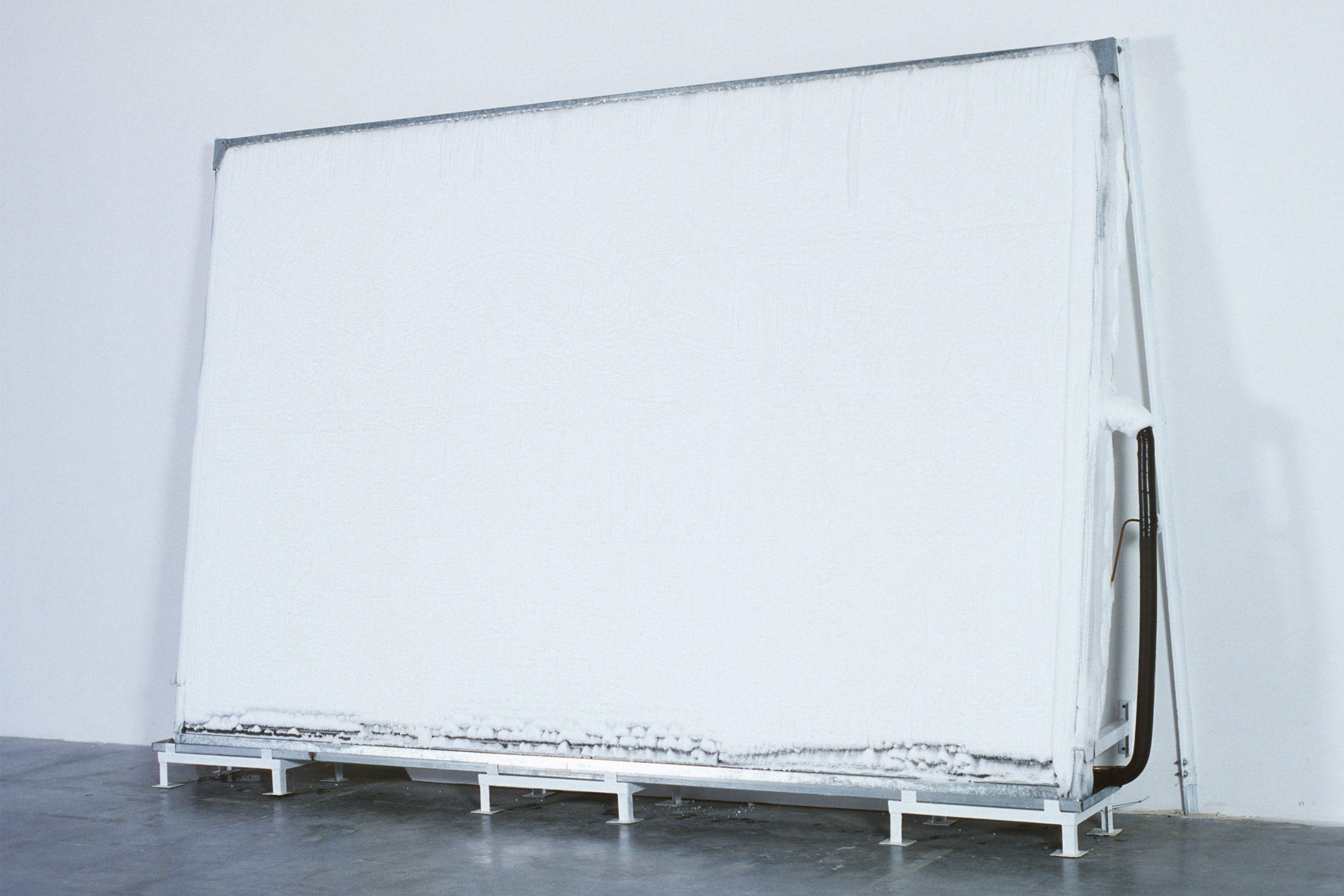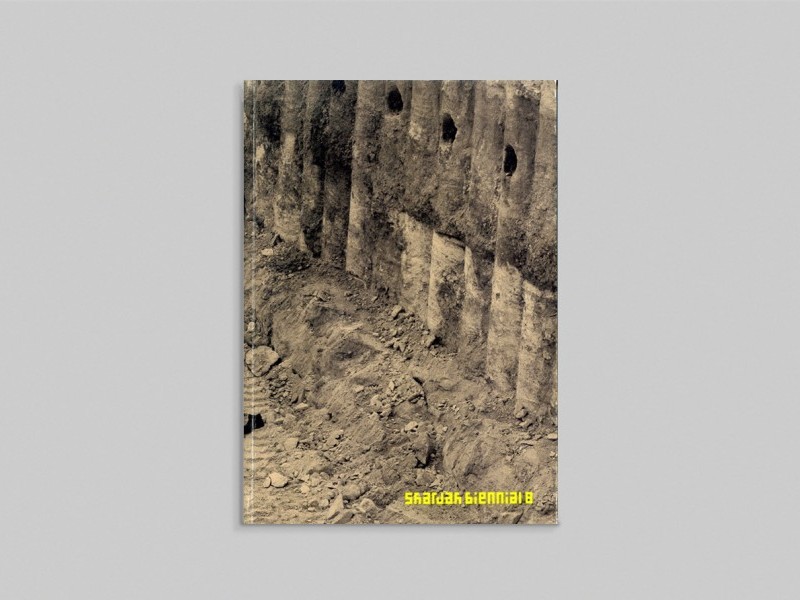
Landscape Minus 37 ° C, 2004
Maha Mustafa
Landscape Minus 37 ° C, 2004
Freezing units
Installation view
search


Maha Mustafa
Landscape Minus 37 ° C, 2004
Freezing units
Installation view
In the art of Maha Mustafa a tension appears physically between what you might call a "meteorological" and a "geological" perspective. They often confront each other within the same work – as in Landscape Minus 37°C, where the ice appearing on the ribs of a gigantic freezing unit arouses the illusion of a frosty mountain scene. The cold – a meteorological and therefore changing phenomenon – thus creates strata of a geological, that is, remaining nature, which is of course a pretty accurate description of how it actually happens. This, however, does not make the problem less acute. Survey at the same time demands a notion of the changeable – and an ability to look beyond it. Could this be possible?
You might say that art, as long as man has devoted himself to it, has been trying to show that this possibility exists. Yes – which indeed it is for the reason that man, since the beginning of history, has been creating art. In her book Det umuliges kunst (The Art of the Impossible) from 2005 the Danish author Solvej Balle expresses a view of art you might call anthropological, based on an understanding of art as a basically existential practice, where man is treating certain conditions consequential upon moving around "with body, identity and mind in a world of time, space and materiality". In the restrictions implied by this, artistic practice gives the opportunity for transgressions that provoke a feeling of totality, of survey: of, for a moment, being able to perceive the world in a way that suits our senses. The works of Maha Mustafa seem to me to be rooted in a similar basic outlook. Swinging between a human and a superhuman view, between the transitory and the remaining, they seem constantly to seek new outlooks: new ways of accomplishing this "impossible" mission.
This project was part of Sharjah Biennial 8.

This catalogue accompanied Sharjah Biennial 8, which attempted to renegotiate the relationship between art and ecology into a system of cohabitation.

The second book in the Still Life: Art, Ecology and the Politics of Change series, documents Sharjah Biennial 8 as it was on view.